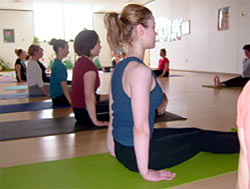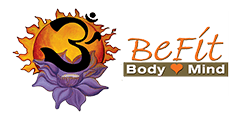Download a guide to this pose. (PDF)
Dandasana Danda = Stick or Staff “Stick Posture”
Our spine is our danda, or stick, attention is given to proper alignment of the spine in this pose.
Dandasana is the “Samasthiti” of the seated poses, most of our seated poses start from this position. Dandasana helps prepare the back for the forward bending postures to come. It also develops awareness of extending our spine–this action strengthens the middle back (improving posture). The middle back first contracts as we prepare for a forward bend (with the “inhale look up and extend your spine”) and then relaxes as we ease into the pose.
Alignment
|
 |
NOTE: If you have tightness in your lower back or hamstrings you will need to bend your knees (or prop your hips up) to keep the spine onhealthy.net/product/cialis/ straight, priority is given to the straight spine—“attention to spinal extension”.
Yoga Chikitsa
Dandasana is the transitory pose from the standing postures to the seated postures. This is where we enter the Primary Series of Ashtanga Yoga, known as “yoga therapy” or yoga chikitsa. The practice of yoga chikitsa helps to cleanse and purify the internal organs–if the organs of the body are not clean, disease develops. In today’s sedentary lifestyle with the prevalence of processed foods the organs of the body are over-loaded.
The asana in primary series are effective in preventing the accumulation of waste products, keeping the body free from disease. Postures (yogasana) can help rebalance a diseased body and maintain balance in a healthy body. Each individual asana has many specific benefits, but it is important to acquire flexibility–the deeper the asana is performed the greater the internal cleansing effects.
It is not just the asana that detoxify the body, it is the heat, the sequencing, the breathing and the bandhas combined with the asana that create quite an extraordinary therapeutic system.
The actual practice of learning and doing Ashtanga Yoga is therapy—the breathing, sweating, stretching, rearranging, realigning, squeezing and soaking, purifying, and transforming. It cleans out the system, destressing and detoxing as it assists the body in its ability to heal itself and maintain a strong and healthy immune system.
